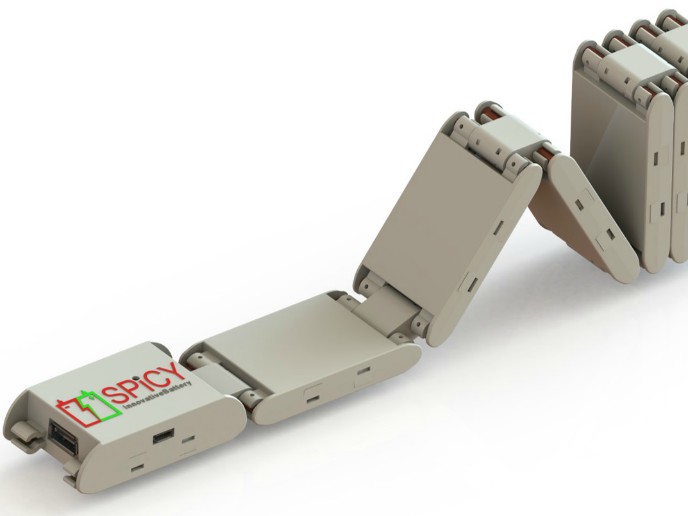New solid-state electrolyte promises microbatteries that pack a mega punch
We could soon be using less flammable, longer-lasting and more powerful rechargeable batteries after a breakthrough made by EU project SUPER-Lion. With the support of a Marie Curie programme, Dr Knut Bjarne Gandrud developed a super-thin solid-state electrolyte for rechargeable batteries. Electrolytes are the chemical medium that separates a cathode and an anode in a battery, allowing the flow of an electrical charge between the two. Lithium Ion Batteries (LIBs) currently run on liquid electrolytes. But SUPER-Lion’s new form of manufacturing solid-state electrolytes could pave the way for them to be used in slim batteries for devices being developed for the emerging market of the Internet of Things. The electrolyte is super thin at 40 nanometres, making it ideal for microdevices. Dr Gandrud’s research was supervised by Professor Philippe Vereecken, Scientific Director at the nanoelectronics and digital technologies hub IMEC, and professor at KU-Leuven in Belgium, and assisted by two Masters students. “Our battery could operate at 120 degrees Celsius, a feat that today’s batteries with liquid electrolyte cannot do,” says Dr Gandrud. “The liquid electrolytes used today are flammable and the battery has a limited cycle-life partly due to side reactions between the electrodes and the electrolyte.” Liquid electrolyte-run LIBs are used in most devices like mobile phones and laptops but also in electric cars. Most solid-state lithium batteries tend to be used in smaller applications that do not need much energy or where safety is key such as medical implants. Small but powerful That’s because many solid-state lithium batteries on the market have limited capacity or only operate at higher temperatures. SUPER-Lion’s fabrication method changes that. It developed a Nano Composite Electrolyte (NCE) that can be easily integrated into small batteries, allowing the energy of the battery cell to be easily increased. The fabrication method is also easy to scale-up for mass-production at the right price. The team tested it in battery cells with lithium metal as the anode, the most challenging material since most materials are not chemically stable against it. There are real benefits to using lithium since it has the potential to increase the energy density of rechargeable battery cells to beyond 1000Wh/L. The results showed the team haven’t reached all their goals yet but are on the right path. For example, the battery had only 75 percent of a liquid electrolyte LIB’s reversible capacity – where the battery’s cell charge is restored after the battery has run down. However, crucially, the cell was more efficient than when it contained a liquid electrolyte and had a longer cycle-life. “The new solid-state electrolyte did not suffer from any unwanted side reactions with the electrodes,” says Dr Gandrud. Commercialising the product may take time. Developers are likely to create more small electronic devices once the micro-batteries needed to power them are available; if there were more devices needing powerful micro-batteries, there would be more private investment for manufacturing those batteries. “It is the problem of the chicken or the egg,” says Prof. Vereecken. The market potential for solid-state electrolytes makes it a hot topic for researchers. “The EU funding was critical for us,” says Dr Gandrud. “Due to the tough competition it is difficult to get funding.”







